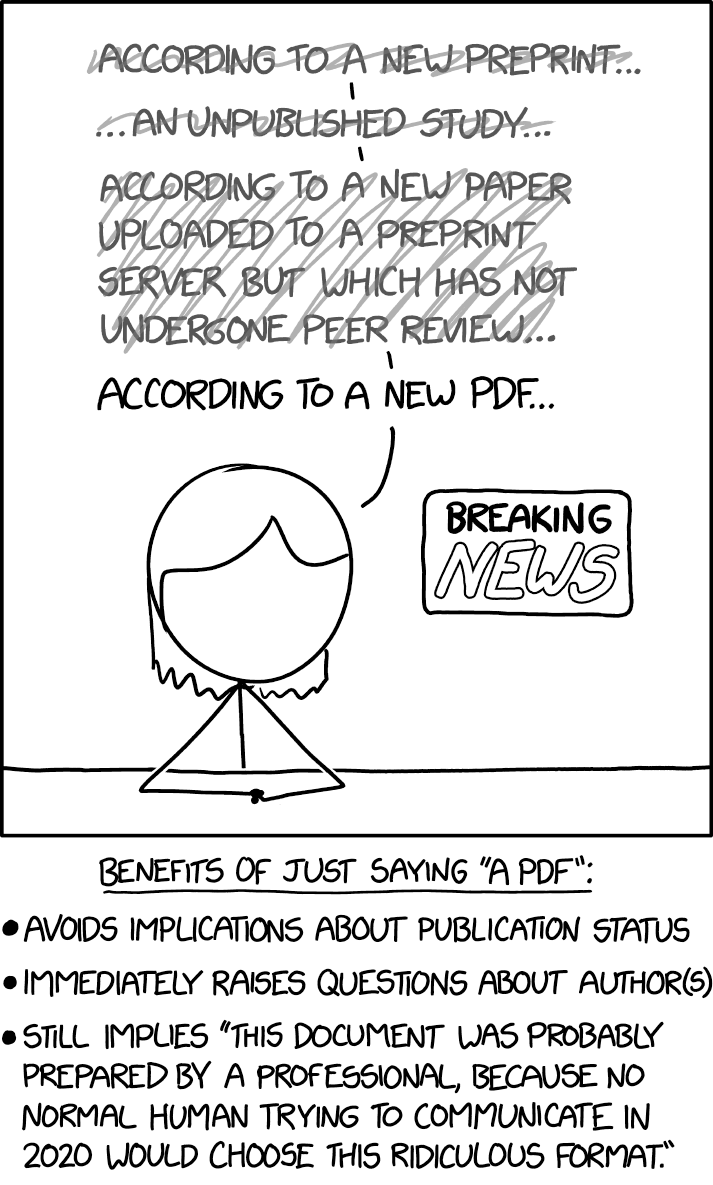A pre-print is a scientific study that is published without first being vetted by experts in a process called peer review.
During peer review, the scientific paper is sent to at least two other independent scientists who have expertise in the specific field. These independent researchers review the study and provide feedback and comments as well as recommendations on whether the study should be published.
Peer review is integral to the scientific process. The critical outside assessment validates and instills trust in the science being published. It is also what differentiates science in a well-respected academic journal from someone (including experts) publishing a report through a blog. When you read a paper published in an academic journal, you at least know it has been reviewed by other experts in the field.
Despite its importance, peer review has issues; chiefly, it is very slow. When scientists submit their papers to a journal, they may wait months to receive comments back from reviewers, upon which, they will then have to submit revisions and again wait for reviewers’ approval. It is not uncommon for the whole process — from submission to final publication — to take a year or more.
This is where pre-prints can be useful. To help get information out faster, a number of organizations (arXiv, MedScape, medRxiv, etc) host sites where scholars can “pre-publish” their scientific results. Researchers upload their documents, and immediately, the world can read what they have written. Then, once these studies undergo peer review, they are officially published in a journal elsewhere. As is human nature, though, this process has its own issues. Chiefly, there is no validation stage of these pre-prints to check whether the research, in terms of its methods, analysis, or conclusions, is of a high quality. This is why there are often disclaimers on pre-prints stating these results should be taken with caution.
With the COVID-19 pandemic, there has been a great demand for studies to be released as quickly as possible. While pre-prints have been a great way for scientists to disseminate this information, the public (and journalists) should interpret such information with a healthy dose of skepticism. Do not use them to guide clinical practice!
credit: xkcd.com
